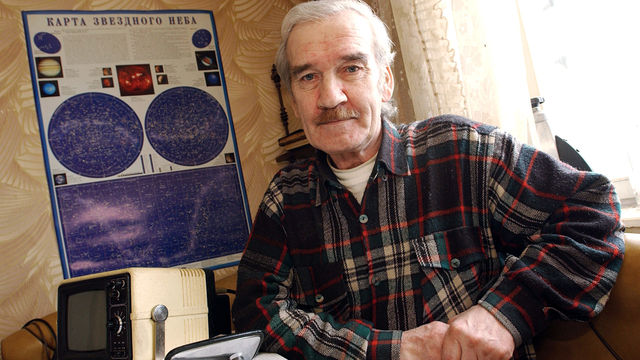I’d never heard of this chap, which seems unfair considering that if it hadn’t been for him none of us would be here reading this week’s riveting edition of The Wikiworm…
Stanislav Petrov (born c. 1939) is a retired lieutenant colonel of the Soviet Air Defence Forces. On September 26, 1983, he was the duty officer at the command center for a nuclear early-warning system when the system reported a missile being launched from the United States. Petrov judged that the report was a false alarm. This decision is credited with having prevented an erroneous full-scale retaliatory nuclear attack on the USA and its NATO allies, which could have resulted in global nuclear warfare. Investigation later confirmed that the satellite warning system had malfunctioned.
It was subsequently determined that the false alarms had been created by a rare alignment of sunlight on high-altitude clouds and the satellites’ orbits, an error later corrected by cross-referencing a geostationary satellite.
There are questions over the part Petrov’s decision played, because protocols for nuclear retaliation are based on multiple sources that confirm an actual attack. The incident, however, exposed a serious flaw in the Soviet early warning system. Had Petrov reported incoming American missiles, his superiors might have launched an attack.
Petrov later indicated the influences in this decision included: that he was informed a U.S. strike would be all-out, so five missiles seemed an illogical start; that the launch detection system was new and, in his view, not yet wholly trustworthy; and that ground radars failed to pick up corroborative evidence, even after minutes of delay.
He received no reward. According to Petrov, this was because the incident and other bugs that were found in the missile detection system embarrassed his superiors and the influential scientists who were responsible for the system, so that if he had been officially rewarded, they would have had to have been punished. He was reassigned to a less sensitive post, and took early retirement.
In a later interview he stated that the famous ‘red button’ has never worked, as military psychologists did not want to put the decision about a war of total annihilation into the hands of one person.












Strange times, knew a man who spent his days, and nights, sat in the seat of a buccaneer that lurked, poised, in a hole in the ground in the Hunsrück. Nailed on it’s tummy was a whacking big whoosh-bang-ooh nasty. Years later, when the stooshie had subsided I asked him what his thoughts were, as he waited for the Armageddon go-ahead. “I used to wonder if the branch of Lloyds in Harrogate that held my overdraft was marked on the Russian map”
Actually, I think he was telling porkies, like any sane alpha male at that time he would have been pondering Chrissie Hynde.
We were of course wasting our time, ta very much Ray Davis.
Once on the Washington Metro I was in earshot of a couple of lawyers, both former Marines. One had been an artillerist, and had served in a unit that was trained to fire tactical nuclear rounds. A training session he spoke of included the dialogue
Colonet: … now, if you have a misfire, you have a real big problem.
Lieutenant: How big a problem, sir?
Colonel: You have 30 seconds to go four miles.
Back at the beginning of the 1960s, NORAD detected a massive Soviet missile launch against the US. A moment or two of reflection found reasons to doubt the data, for example that the Soviet premier Kruschev was then in New York. A closer look at the data created further doubts: the trajectory of the attack was such that it would never land. Yet another look showed that it was the rising moon that had appeared on radar.